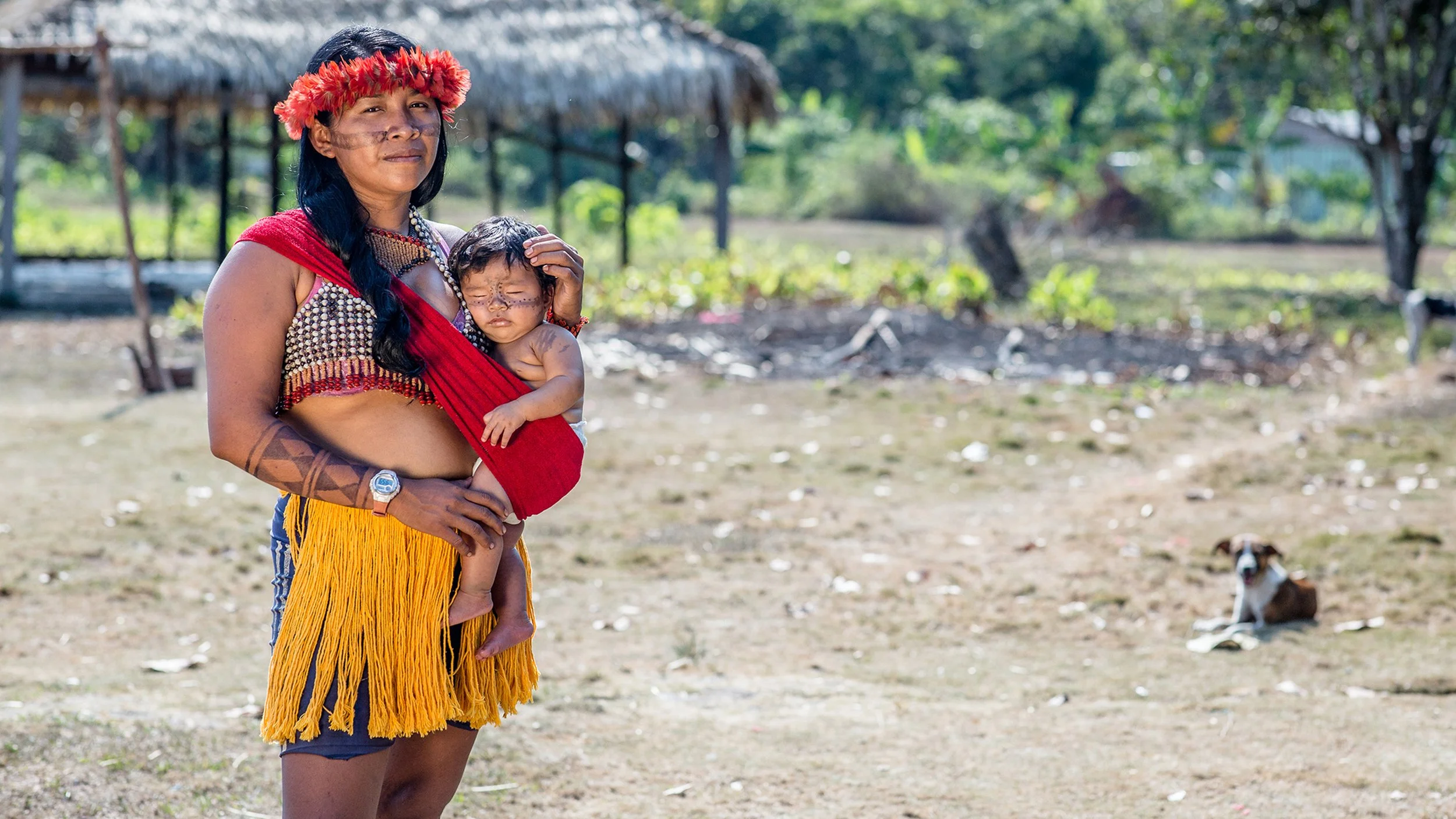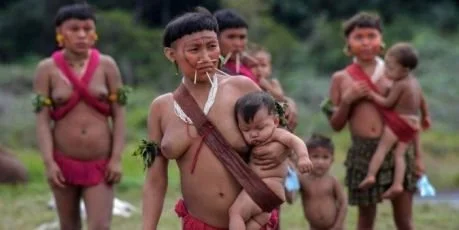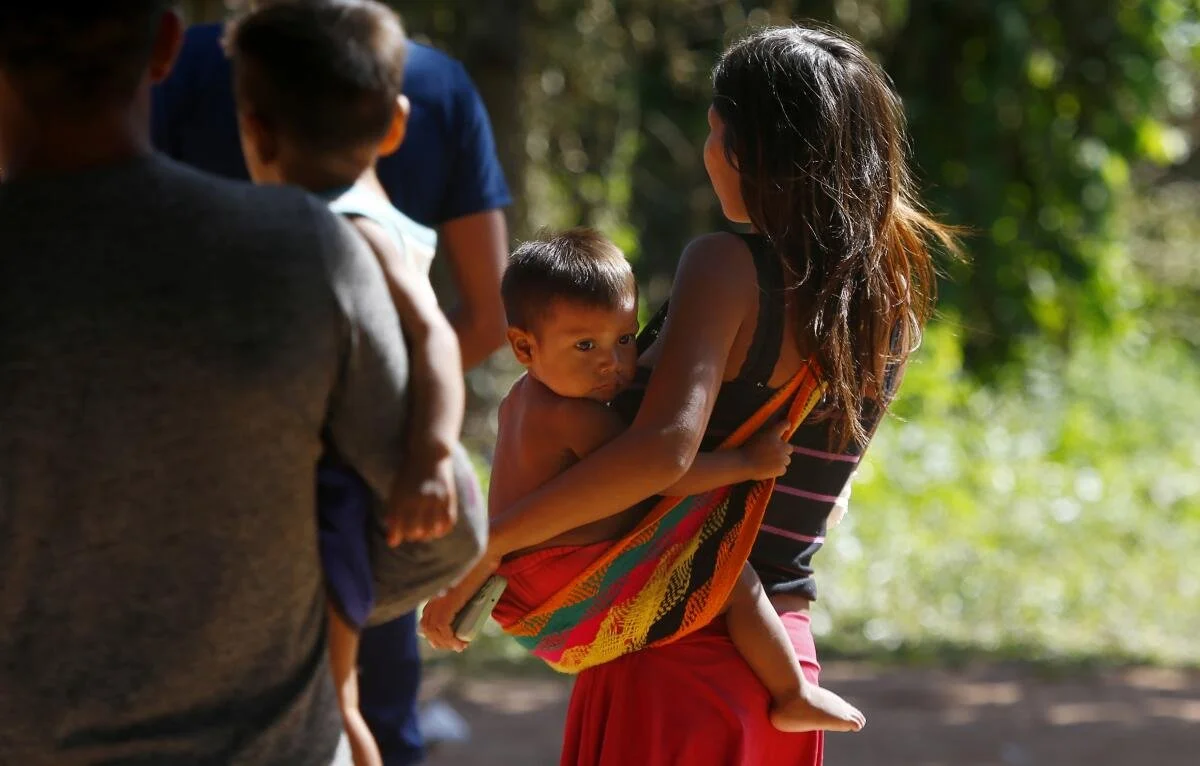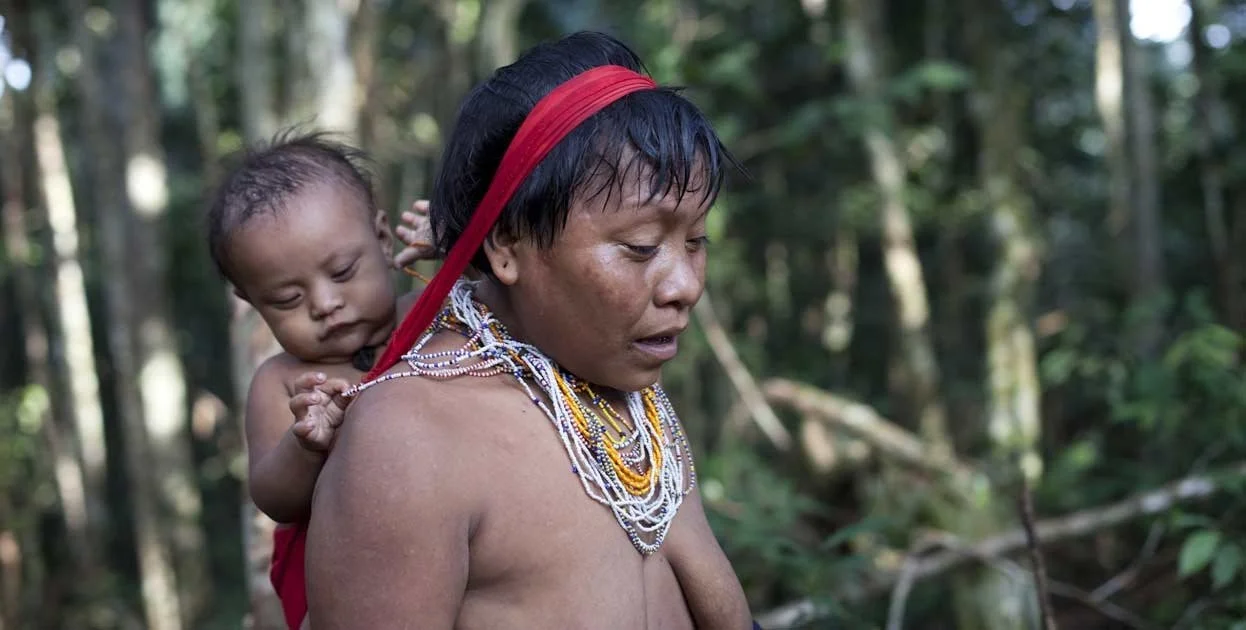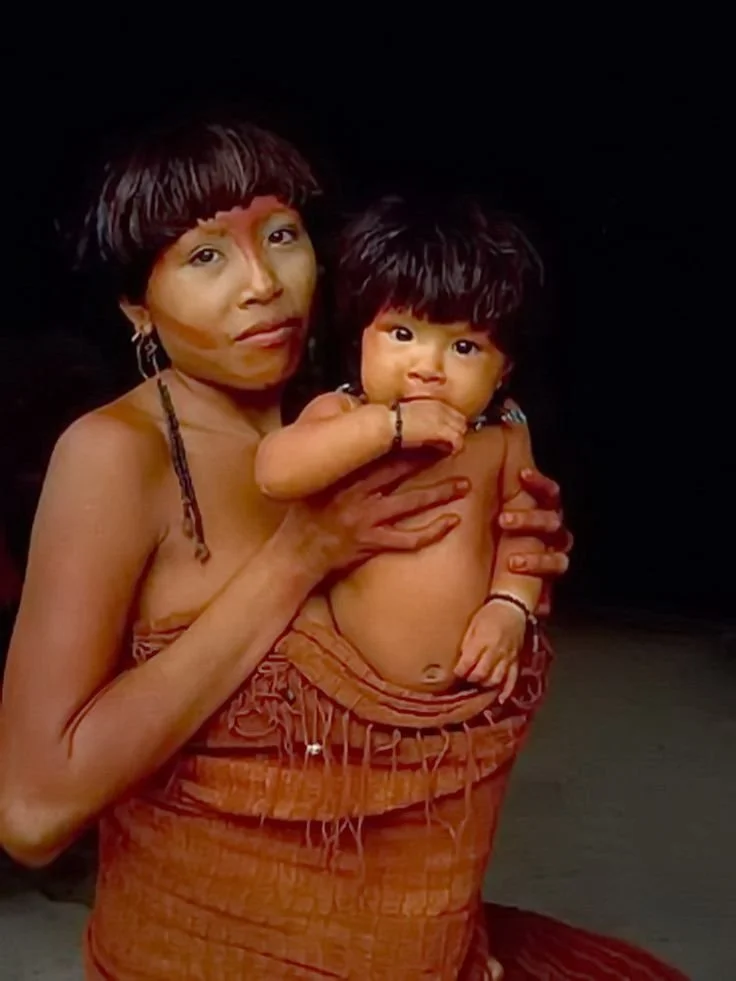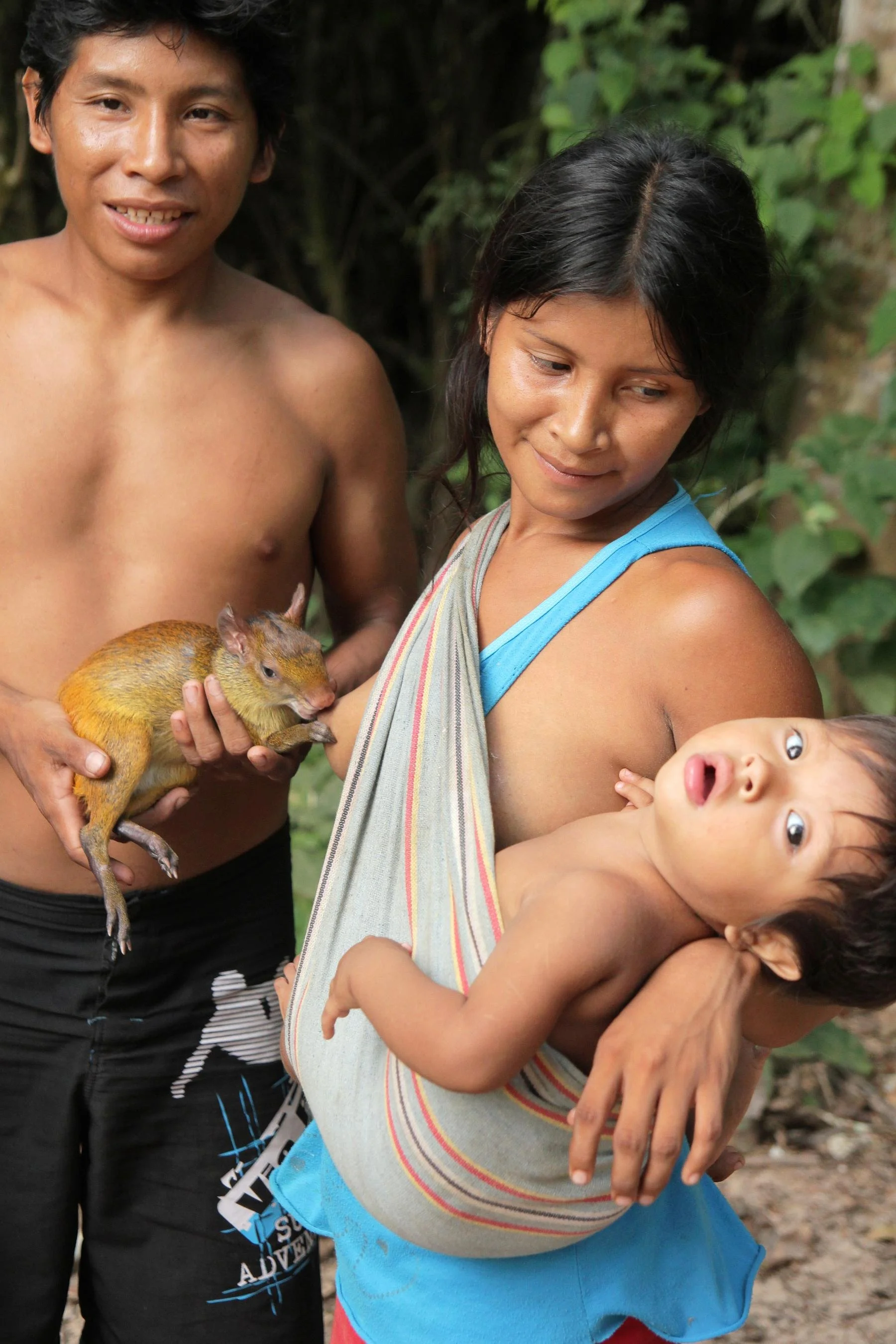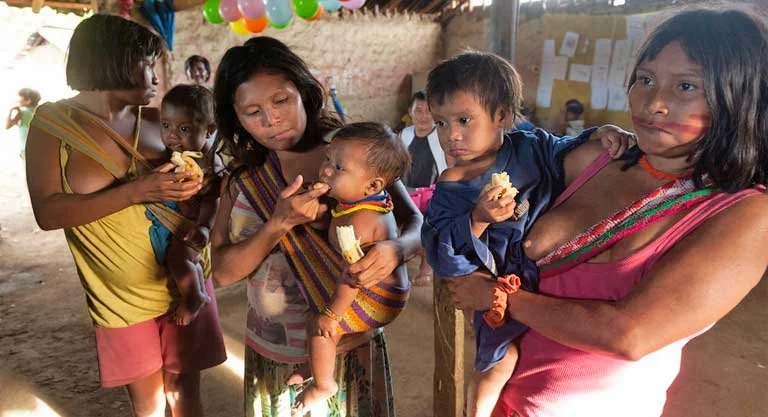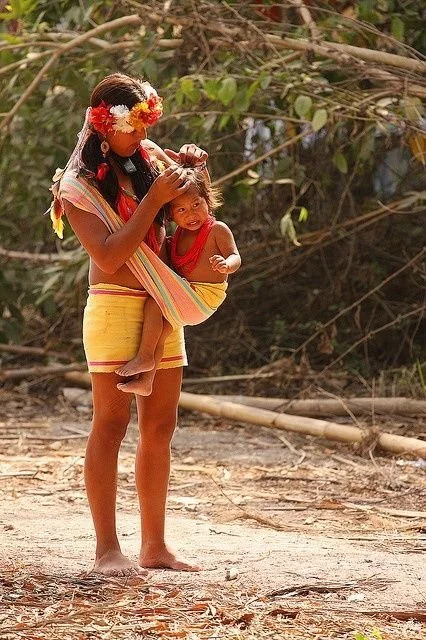The Amazon: Forest Cradles and River Songs
In the lush, endless green of the Amazon rainforest, babywearing practices echo the rhythms of flowing rivers and whispering leaves. Among the many Indigenous peoples of the Amazon — including the Yanomami, Tikuna, Kayapo, Shipibo, and countless others — carrying a baby is an intimate act of connection, rooted in both practicality and deep cultural belonging.
Mothers and caregivers often use simple cloth slings, woven wraps, or soft basket-like carriers to keep babies close as they move through dense forest trails or paddle along winding waterways. Babies sway with each step and each paddle stroke, learning the sounds of birds, the rush of rain, and the gentle hum of insects from their very first days.
In these communities, closeness is not just about safety — it is about teaching. Babies observe everything from a secure, warm vantage point: how to harvest medicinal plants, weave baskets, fish in river shallows, and participate in ceremonies. Each movement and touch becomes a lesson in how to live in harmony with the forest.
Carrying methods are often adapted from locally available materials and passed down through generations in oral traditions rather than written records. This continuity reflects a profound respect for ancestors, the land, and the delicate balance that sustains life in the rainforest.
To be carried in the Amazon is to be cradled in the breath of the forest, to hear songs that echo through the canopy, and to grow up feeling the pulse of earth and water as your first lullaby.
Among Indigenous mothers of the Amazon, carrying is a living expression of connection — to family, to forest, to spirit. Here, a mother holds her baby close in a vivid red sling, their skin marked with intricate designs that speak of heritage and belonging. The baby's head rests gently against her chest, absorbing each heartbeat and each story carried in song and silence. In the woven threads of her sling and the painted lines on her skin, we see a deep harmony with the land and an unwavering promise that each child is held within the circle of tradition, love, and the living breath of the forest.
This powerful image shows a Yanomami mother from the Amazon rainforest carrying her baby on her hip using a simple woven band, worn across her chest and shoulder. The baby rests peacefully against her body, supported both by her arm and the sling, a testament to the deep closeness and constant connection central to life in Indigenous Amazonian communities. Her body paint and natural adornments speak to rich cultural traditions of identity, protection, and belonging. In the background, other community members carry children in similar ways, reflecting the shared, communal nature of caregiving. This scene beautifully embodies babywearing as a practice deeply rooted in love, community, and cultural continuity."
In this photo, a young woman from an Indigenous community in South America carries her child in a brightly woven sling, a style deeply rooted in traditional ways of life. The sling, draped across one shoulder and supporting the child at her hip, allows her to keep her hands free while moving through daily activities. The vivid colours and patterns reflect the region’s textile heritage, and the close physical connection highlights the importance of warmth, security, and constant contact in these caregiving traditions.
Among the Yanomami people of the Amazon rainforest, babies are carried closely against the mother’s back or hip using simple cloth or woven bands. This intimate way of carrying allows the baby to stay in constant skin-to-skin contact, sharing warmth and connection while the mother moves freely through the forest and tends to daily tasks. The brightly coloured beads and headbands worn by Yanomami women are not only beautiful but also carry cultural meaning and identity. This image captures the deep bond between mother and child — a quiet reminder of the power of closeness and the importance of touch in nurturing secure, resilient little ones.
"This powerful image shows an Amazonian mother carrying her baby close in a handwoven wrap, made from plant fibers gathered and prepared in her own environment. Used on the front, this simple yet secure carrying style keeps the baby in constant contact with her body — supporting warmth, connection, and frequent breastfeeding. The natural body paint and handmade adornments highlight the deep cultural ties and identity woven into everyday care. In many Indigenous Amazonian communities, carrying is not just a way to transport a baby; it is an expression of love, belonging, and a profound bond with both family and the land."
In this striking image from the Amazon rainforest, we see a woman carrying her child in a simple front sling, a common style among many Indigenous communities in South America. The cloth supports the baby snugly at her hip, allowing her to continue daily activities while keeping the child close. Remarkably, she is also seen breastfeeding a small animal — a practice not uncommon among some Amazonian groups when caring for orphaned or young wild animals, reflecting a deep connection to the natural world and a commitment to nurturing life in all forms. This intimate moment beautifully illustrates the intertwined roles of caregiving, community, and coexistence with nature.
Among Indigenous communities in the Amazon, mothers carry their babies in simple woven slings that keep little ones nestled close, even during gatherings and shared meals. In this image, mothers feed their children while standing together, their painted faces and beadwork echoing the deep bonds between land, family, and tradition. Each child learns early the warmth of community and the rhythm of collective life, woven into every movement and shared moment. Even in times of political and environmental threat, these quiet gestures of care hold resistance, resilience, and hope.
In many upper Amazonian communities of Brazil — such as the Kayapo and Yawalapiti — colorful woven cloths are used to carry children, tied in a simple hip or torso wrap that allows mothers to remain mobile and connected. Floral headdresses, like the one worn here, are deeply symbolic and often worn during festivals or community events, representing beauty, connection to the forest, and communal identity. These cloth carriers are an extension of the mother’s body, holding the child close while she participates in daily life and ceremonial life alike.

